LaTeX templates and examples — Two-column
Recent

Created using the Deedy CV/Resume XeLaTeX Template Version 1.0 (5/5/2014) This template has been downloaded from: http://www.LaTeXTemplates.com Original author: Debarghya Das (http://www.debarghyadas.com) With extensive modifications by: Vel (vel@latextemplates.com)
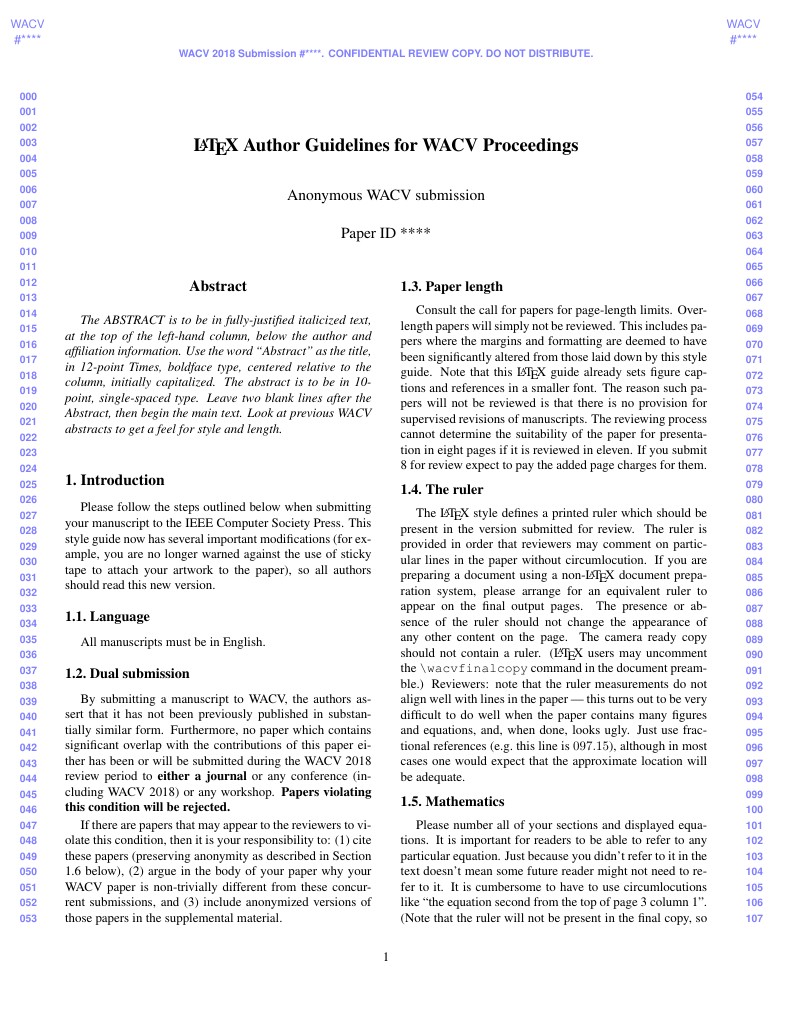
Template for preparing submissions to WACV2018. (This version of the template contains a modification in wacv.sty for better compatibility with tikz and pgfplots packages).
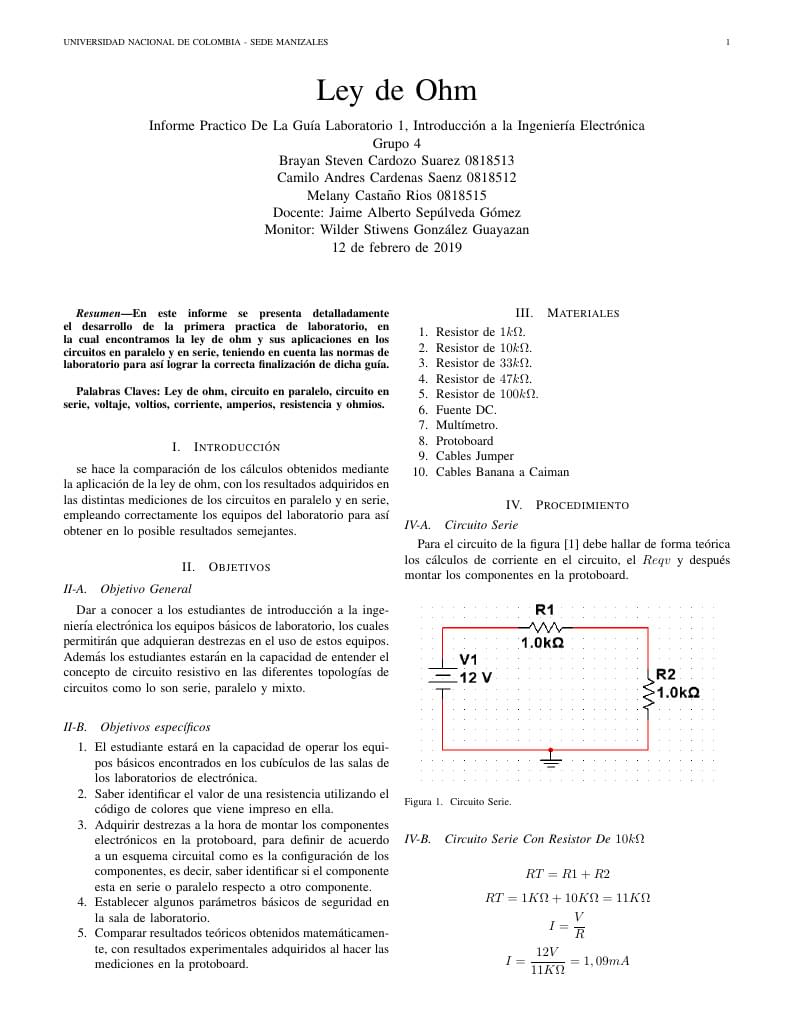
En este informe se presenta detalladamente el desarrollo de la primera practica de laboratorio, en la cual encontramos la ley de ohm y sus aplicaciones en los circuitos en paralelo y en serie, teniendo en cuenta las normas de laboratorio para así lograr la correcta finalización de dicha guía.
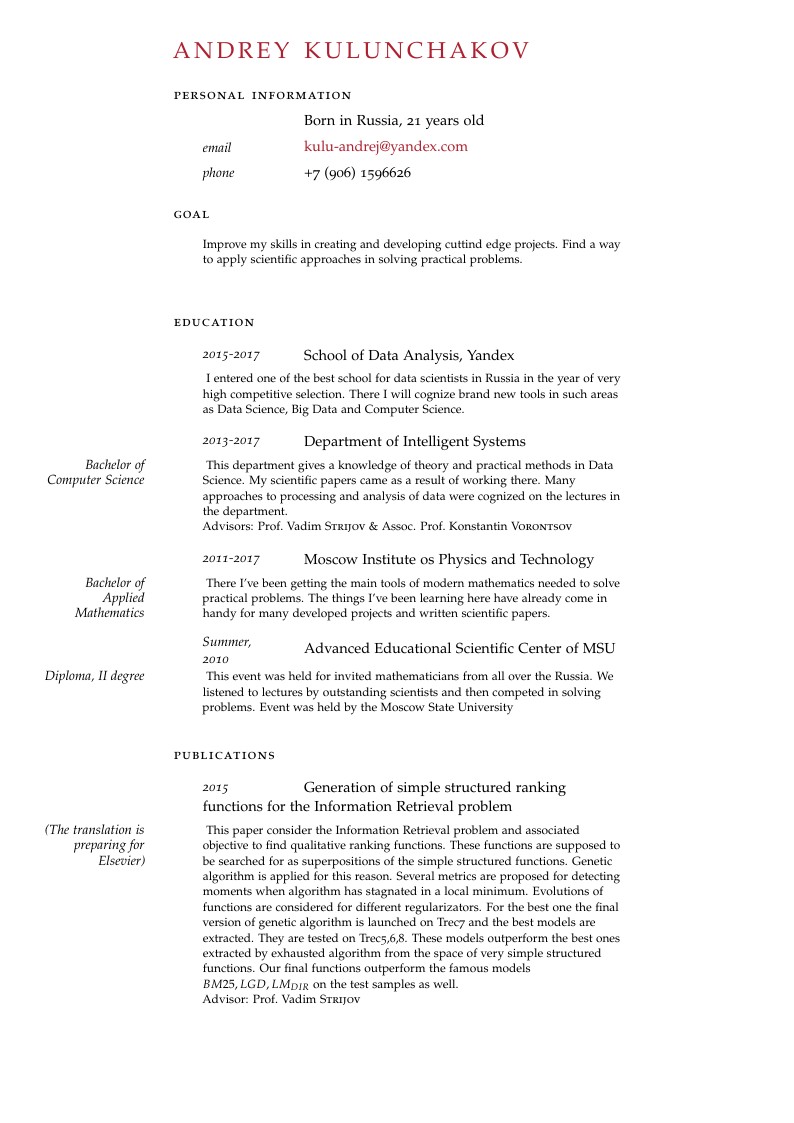
Created using the Classicthesis-Styled CV LaTeX Template Version 1.0 (22/2/13) from LaTeXTemplates.com, originally by Alessandro Plasmati
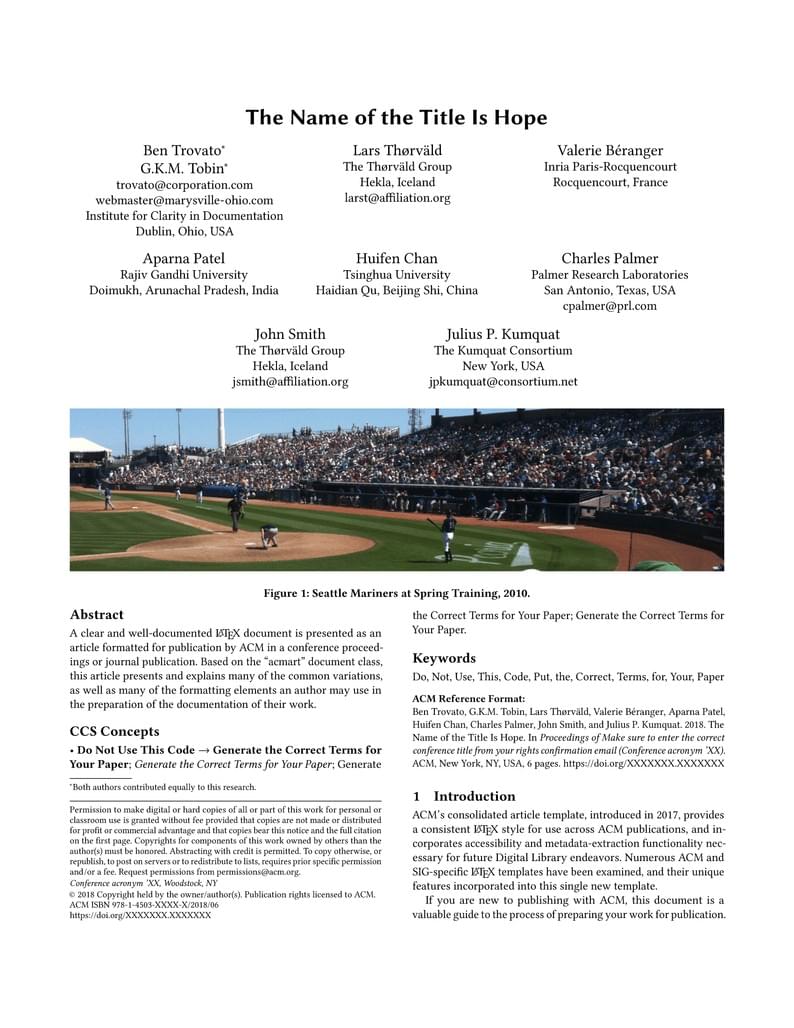
This is a sample file for ACM SIG conference proceedings (except SIGPLAN), using acmart.cls v2.16 (2025/08/28). It is provided by the ACM as a template for submissions, and pre-loaded in Overleaf (formerly writeLaTeX) for ease of editing online. Please see the ACM Submission Guidelines page for more details on manuscript preparation. Note: Most proceedings authors will use this "sigconf" proceedings template. If you are unsure which template variant to use, please request clarification from your event or publication contact. As of March 2017, this format (sigconf) should also be used for SIGGRAPH conferences; and as of May 2020 this format (sigconf) should also be used for SIGCHI conferences. Important information regarding submission versions for review: After finalizing the formatting of your paper you must use the option “manuscript” with \documentclass[manuscript]{acmart} command. This will generate the output in single column review format which is required. Accepted manuscripts will be transformed during production to produce properly formatted output accord to the publication specifications. Authors will be provided the opportunity to review and approve the formatted output before the article is published to the ACM Digital Library.
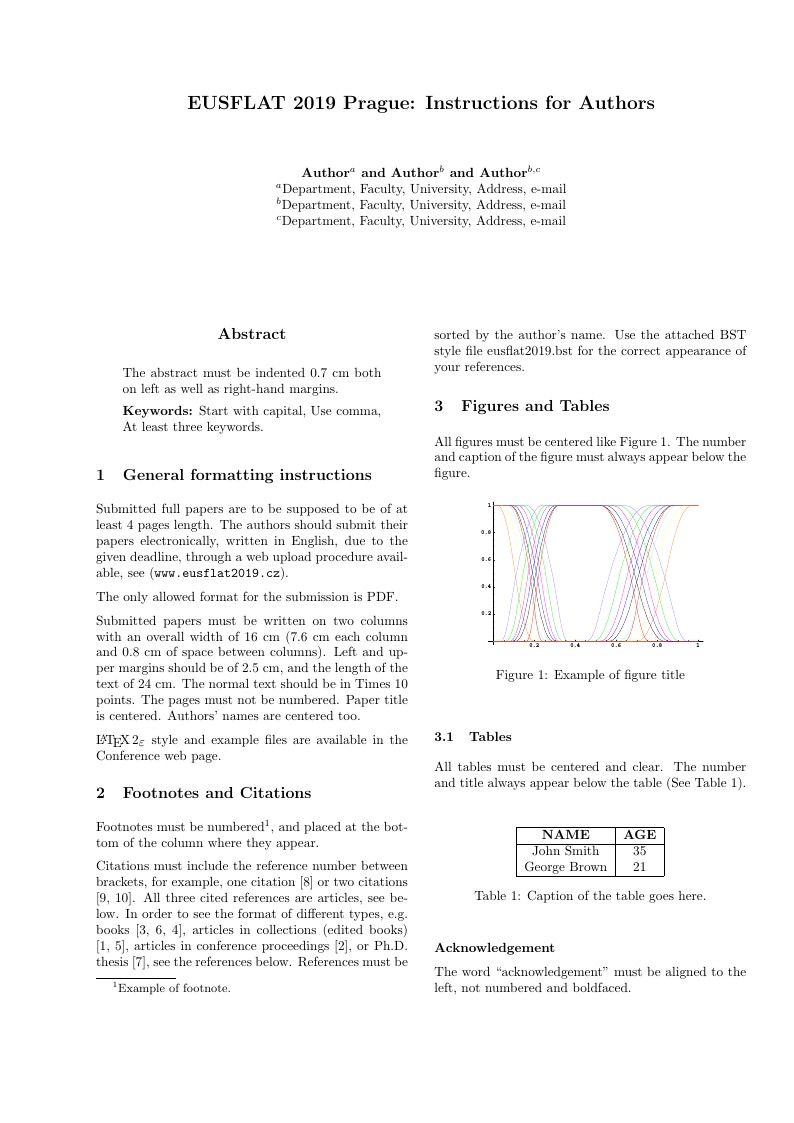
Submitted full papers are to be supposed to be of at least 4 pages length. The authors should submit their papers electronically, written in English, due to the given deadline, through a web upload procedure available, see www.eusflat2019.cz).
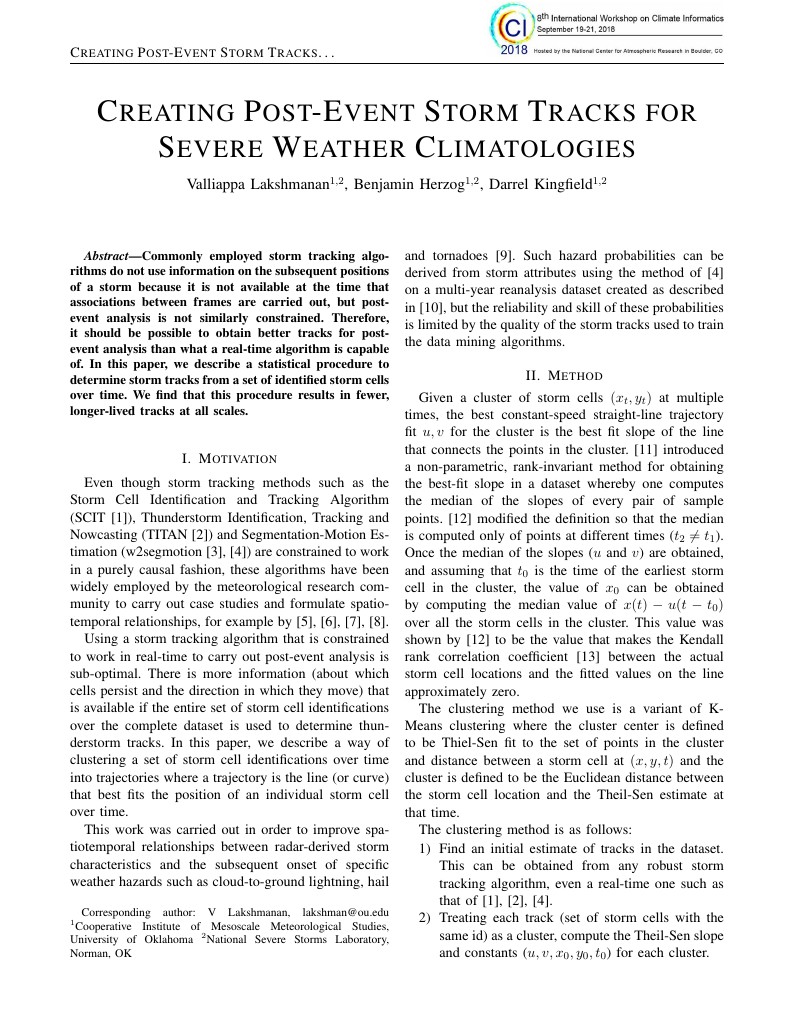
This is the LaTeX template for Climate Informatics 2018 Workshop.
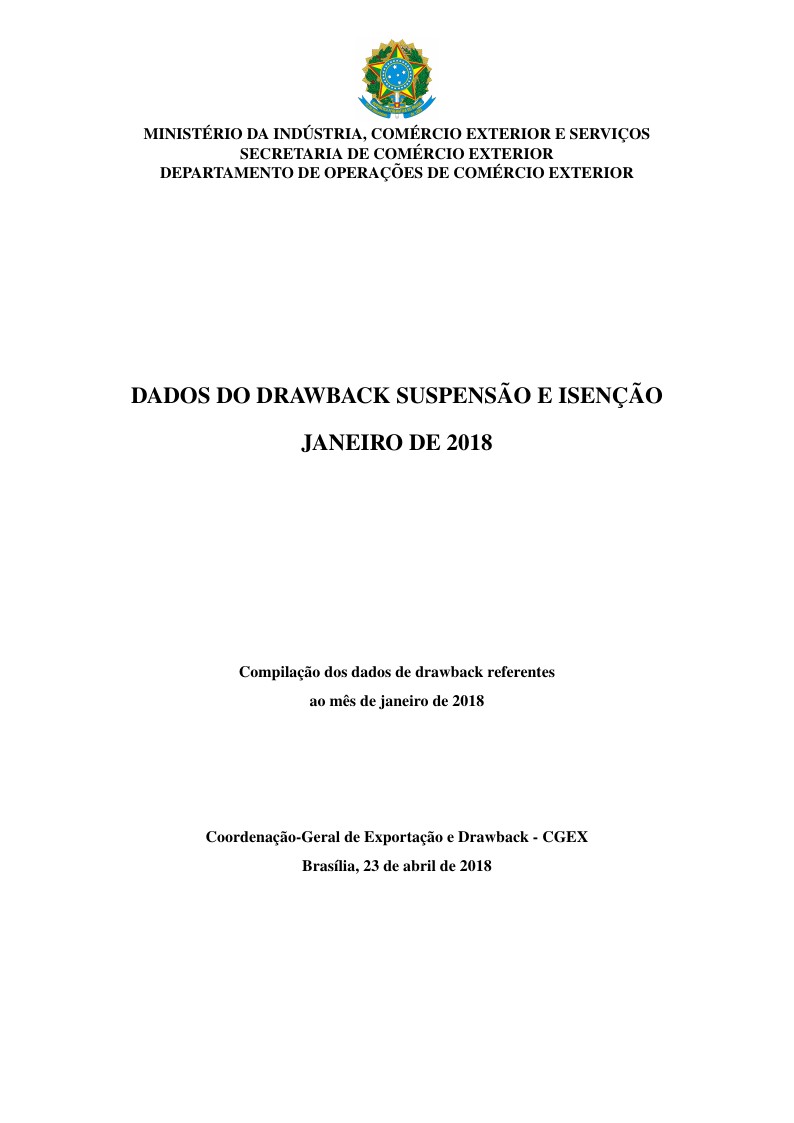
Template para o relatório de drawback.
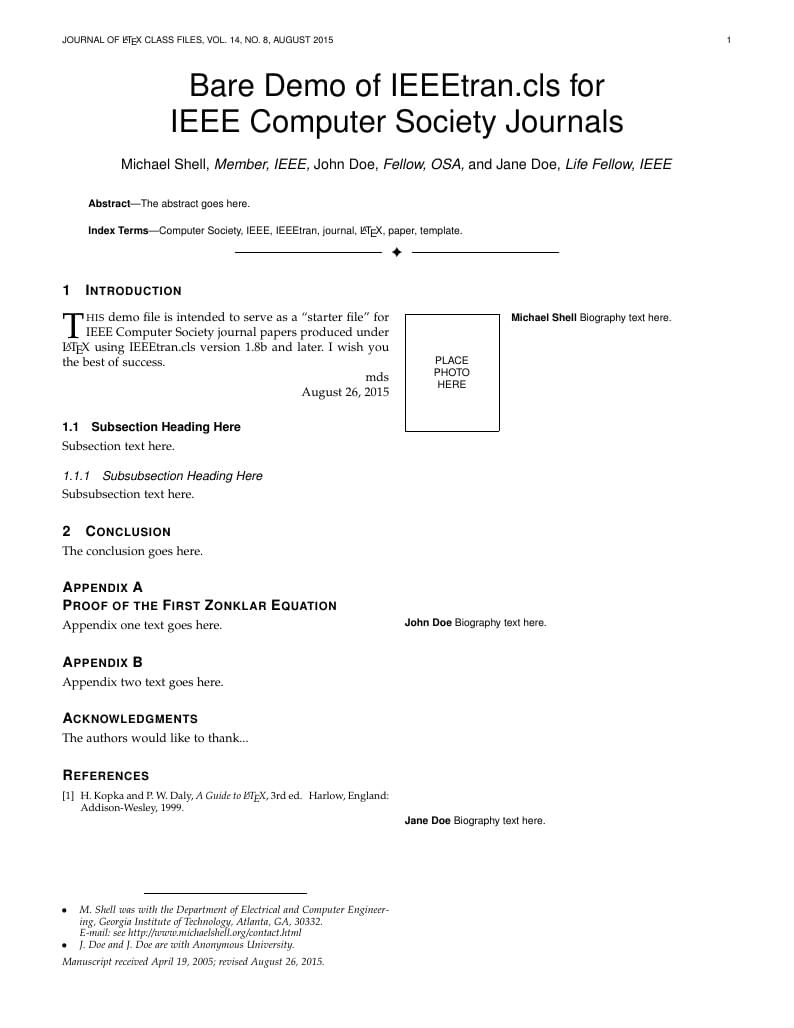
The IEEE provides guidelines for the preparation of papers and presentations for their conference proceedings, including a series of LaTeX templates. A number of templates using the IEEE style are available on Overleaf to help you get started - click above to use this template for Computer Science journals, or use the tags below to find more. IEEEtran.cls version: 1.8b
\begin
Discover why over 20 million people worldwide trust Overleaf with their work.